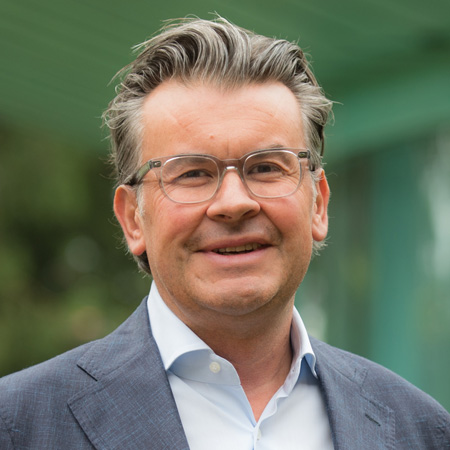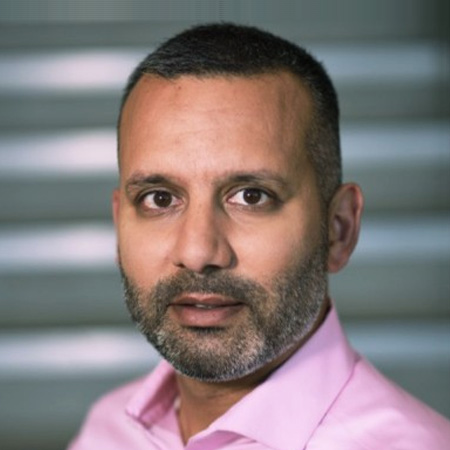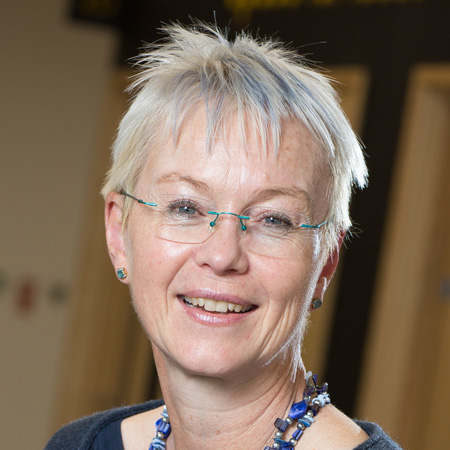Scrip Asks...What Does 2023 Hold For Biopharma? Part 1: The Funding Environment
Can Biotechs Weather The Ongoing Downturn Or Will There Be Carnage?
Executive Summary
With valuations down and borrowing costs up, many industry insiders are expecting Darwinian scenes in biotech this year. Survival of the fittest is the order of the day: companies with riskier, less commercially defined propositions will struggle, while platform companies with multiple shots on strong goals will increasingly find favor in a more risk-averse environment.
The first half of 2022 saw the NASDAQ Biotechnology Index lose a quarter of its value. Despite a tentative recovery since then, the IPO window is barely ajar and valuations remain well below the highs of September 2021, when a five-year biotech boom peaked.
For the first installment of Scrip’s annual series sounding out executives, experts and investors on the year ahead, we asked how the biopharma funding environment would evolve in 2023. The mood among the 35 industry leaders who responded was mixed, ranging from extreme pessimism – “one of the most severe funding situations the industry has ever seen” according to one venture capital partner – to optimism, at least for certain types of company. Even the optimists tended to agree that the year would be challenging, with companies needing to make careful strategic choices.
“With inflationary and other global macro-economic pressures expected to continue in the first half of 2023, it is likely that the funding environment for 2023 will retain many of the features seen in 2022,” said Tom Goodman, a London-based partner at global law firm Cooley. This view was commonly held, so let’s start with the doomsayers, who homed in on depressed valuations, reduced money in the public markets and rising inflation and interest rates. To jump to the optimists or other themes, click on the buttons below.
DROP DOWN LINKS TO CHAPTERS:
The Pessimists
“I believe the funding environment in 2023 will continue to be challenging, with the geopolitical environment, interest rates, and inflation continuing to have a negative impact on the XBI [S&P US biotech index] and other healthcare related indices,” declared Abid Ansari, CFO of private UK cancer therapy developer Artios Pharma Limited, which most recently raised $153m in a series C round in July 2021.
Stephan Christgau, founding partner of Nordic life sciences venture capital fund Eir Ventures, agreed. “2023 looks to be a very challenging year, and probably one of the most severe funding situations the industry has ever seen,” he told Scrip. “Especially for public companies, but really all part of the ecosystem will be affected. Flexibility and cost-efficiency, the ability to do more with less, will be paramount.”

“I am pretty sure that the current biotech downturn will not correct by the end of this year, and most of 2024.”Pierre Jacquet, L.E.K. Consulting
Pierre Jacquet, managing director and vice chairman of L.E.K. Consulting’s healthcare practice, warned against expecting a rapid recovery. “It's coming back slowly. But don't forget that around 220 biotech companies have negative enterprise value. And the overall aggregate value of public-traded biotech companies has declined by almost two thirds since its peak in early 2021. Yes, we have probably been to the bottom. I just don't know how long it's going to take us to come back to where we were before. It took close to 10 years for the NASDAQ Biotech index to come back to its 2001 level after the market correction that year. Following the more recent biotech valuation downturns it took a year or two to fully recover. It’s true that there is higher trading volume and investor interest in biotech right now than 20 years ago but I am pretty sure that the current biotech downturn will not correct by the end of this year, and most of 2024. It is not going to happen as fast as that: the gap is too big. Could I see a two-three year time to valuation from 2021? Yes. Do I see a cycle of seven, eight years? I don't have a crystal ball, and this will be much driven by the macroeconomic conditions.”
Jack Bailey, CEO of G1 Therapeutics Inc., was another who branded the funding environment “challenging,” placing biopharma in the broader context of the increased cost of borrowing across all sectors. “Broadly, North American companies will have to raise $200bn or more before the end of 2023 just to cover rising interest expenses. In our sector alone, companies – many of which are early-stage – will have to raise $35bn over that period.”
And the problems could be compounded beyond 2023, he warned. “Borrowing costs may be elevated for years if inflation persists, which would force companies into one of two categories: those that can survive on their own earnings and those that cannot. As a result, offerings are likely to be frequent but difficult to pull off due to macro pressures, including a high cost of capital, and companies’ lack of assets with the quality of data investors are seeking.” G1 Therapeutics has an approved CDK4/6 inhibitor for lung cancer, trilaciclib, which it is developing for other indications.
Interest Rates
On the question of interest rates, Jody Staggs, president and interim CEO of specialized finance company SWK Holdings, also pointed out that “rising interest rates alter the risk dynamics for a variety of industries, but this is extreme for early-stage biotechnology and medical device companies. Investors can achieve a fair return on assets that are less risky and this reduces risk-based capital and, therefore, valuations. Unfortunately, this could stall clinical programs at a time when there is much scientific innovation that can improve patient care. Life sciences executives will face tough decisions this year about which programs to fund and which to defer until the funding climate improves.”
“Going into 2022, interest rates were the canary in a coal mine. Unfortunately given interest rate increases, the poor canary has since perished.”Allan Shaw, Portage Biotech
Allan Shaw, CFO of Portage Biotech Inc., was even more emphatic. “For biopharma, it all begins and ends with interest rates. Going into 2022, interest rates were the canary in a coal mine. Unfortunately given interest rate increases, the poor canary has since perished, with the prospect of elevated interest rates increasing biopharma’s cost of capital in the near to medium term while increasing the barriers to capital access. This new interest rate environment has created a ‘risk-off’ sentiment, resulting in a tsunami-like asset re-allocation towards safer investments that is likely to persist until rates recede.”
Interest rates were also on the mind of Ying Huang, CEO of Legend Biotech Corp.: “Right now, funding isn’t coming from generalists yet; it’s mostly coming from healthcare specialist investors. There’s some nervousness in the market because people are still wondering whether we will have a recession and how aggressive the Federal Reserve will be in increasing the interest rate.”
The implication? According to Shaw, “this dynamic has raised the bar for biopharma financings and consequently, I anticipate 2023 being the tale of two cities: ‘the haves and the have nots.’ Companies with good data will continue to have financing access while those without data-driven de-risking events (over the next 12 months) will be confronting the reality of very expensive and punitive financing (if available) to survive.”
Catalysts Required
Michael King, head of healthcare research at US investment bank EF Hutton, took a similar line. “Markets will remain open but will be nowhere near as robust as in recent years. For companies that provide meaningful late-stage data (Phase II or Phase III), capital should still be available,” he said. “There are many examples of recent raises of significant amounts of money on the back of advanced-stage data. A recent example of this is DICE Therapeutics, Inc., which raised $345m after Phase II data for the psoriasis drug, DC-806.”

“We need significant catalysts to support funding and excitement, particularly from generalist investors, to help drive valuations and share price performance.”Abid Ansari, Artios
The need for companies to prove themselves over the next 12 months if they want to retain access to money was flagged by several observers, including Artios’s Ansari, who said: “I don’t believe biotech has seen as many significant data-related catalysts in 2022 compared to years past. We need significant catalysts to support funding and excitement, particularly from generalist investors, to help drive valuations and share price performance for early biotechnology companies.”
Catalysts were on the mind of L.E.K.’s Jacquet, too. “The key driver of making a successful public offering or, if you are already public, your ability to survive is tied to the timing of your news flow,” he told Scrip. “This is more significant than before: previously, if you had a two- or two-and-a-half-year gap on a set of clinical readouts, you could find a way to be public and get access to capital. Right now, if you’re public or planning to go public, and you don’t have a significant milestone before the end of 2024, you will need to bypass an IPO or rethink your portfolio strategy.” Warning that biotechs are in any case often over-optimistic about the timing of data readouts, he was cautionary over the outlook for 2023. “To bring back a lot of general investors in the space, you need a flow of news and milestones and approvals. The expected 2023 newsflow for data readouts, etc, is good, but it's not going to be the best ever.”
Among the approaches Clifford Stocks, CEO of immuno-oncology specialist OncoResponse Inc, recommended to biotechs seeking to weather the storm were “creative financing strategies, maintaining a lean workforce, and focusing on programs that will have data and insights to share.” He added: “Companies must be judicious with resources and not overspend while at the same time driving innovation, selective hiring, retaining outstanding people, and strategically balancing the company’s portfolio.”
Consolidation And Partnering
“The implication of the weakness in the funding environment is that we will see more consolidation and restructuring in cash-constrained biotech companies,” said Les Funtleyder, health care portfolio manager at E Squared Capital Management.

“Companies will explore business combinations in an effort to extend their cash runway, expand their pipeline and present a more attractive proposition for investment.”Tom Goodman, Cooley
Similarly, Cooley’s Goodman noted: “The effective closure of the US public markets presents a challenging environment for later stage companies where valuation pressures will continue and we will see more flat (and in some instances down) rounds alongside efforts to raise non-dilutive funding through partnerships and collaborations with big pharma. Some such companies will explore business combinations in an effort to extend their cash runway, expand their pipeline and present a more attractive proposition for investment. If the inflationary environment stabilizes, we may see increased M&A activity, especially for targets with Phase III assets and across the Atlantic where the relatively weak pound provides opportunities for cash-rich US acquirers.”
L.E.K.’s Jacquet also flagged up the risk to “the publicly distressed companies – around 200 companies are trading under cash right now.” He expected that “a lot of them are basically going to restructure the portfolio to a single asset or single readouts. Some of them will find a way to merge and be acquired […] sometimes there is interesting IP, or an interesting technology that a bigger company would buy for not a lot. And for those companies that just keep investing everything and end up with less than six months of cash on hand, money will be returned to investors. It's not going to be nice.”
Steve Davis, CEO of ACADIA Pharmaceuticals Inc., thought that consolidation would be a good thing for some companies. “The biopharma funding environment in 2023 will evolve to the benefit of SMID cap [small and mid-sized capitalization] biotech companies,” he said. “If biotech capital markets remain disjointed in 2023, as they have been in 2022, then funding for smaller biotech companies from the capital markets will remain a challenge and companies will be forced to prioritize what’s funded. However, this creates opportunity for many SMID cap biotech companies who are looking to expand their pipelines – especially commercial-stage companies with revenue streams that offset the need for them to raise capital to grow their business. Consolidation at this level could be very healthy for the biotech market and the best programs will be funded and surrounded by proven and talented clinical, regulatory, and commercial teams at the SMID level. Given the potential wealth of attractive assets available and the potential return from large pharma acquisitions, it could be a great year for the SMID cap space.”
Meanwhile, alongside consolidation, partnerships are expected to increase as companies seek to survive on less money.
“For those of us who have lived through several market cycles, we understand the need to be creative and think outside the box during periods of lower-than-average fund flows into the biopharma industry,” commented Hans Schambye, CEO of Danish biotech Galecto. “As transaction rounds are taking longer to complete and we are seeing lower reinvestment rates by existing investors, we need to fill in those gaps in funding. For 2023, we expect to see smaller deals mostly raised by companies that have a focused portfolio and clear runway to true capital inflection points. Partnerships and other non-dilutive funding options will also likely increase in 2023.”
The Optimists
Despite the difficulties of 2022, several industry insiders were optimistic about 2023.

“I think the biopharma funding environment will open up once
again in 2023.”Atul Deshpande, Peptilogics
“We're not completely out of the woods, but the worst of it seems behind us. Truly transformative data is being rewarded and that's a large step towards a more normal environment,” said Nadim Ahmed, president and CEO of Cullinan Oncology, Inc. “I am cautiously optimistic and think we’ll see continued momentum.”
Atul Deshpande, chief strategy officer at Peptilogics, Inc., agreed. “I think the biopharma funding environment will open up once again in 2023. It may not be to the levels we saw in 2020 and 2021, but back to the norms that we had before the COVID-19 pandemic,” he predicted. “Investors are waiting for the macro-economic conditions to level off, which will allow them to re-evaluate their portfolios and invest in companies that are showing significant progress.”
And while ongoing difficulty is foreseen for the early part of the year, some even expect the public markets to re-open for new listings before the year is out.
“I expect that we will see more flat or down rounds with private life science companies in early 2023 as companies get to the end of their cash runway and need additional funding to take them to data catalysts. Many of these rounds will likely be insider rounds with existing investors. Once we see the IPO market re-open, which I expect will happen in H2 2023, then we will likely see more money start to flow into both public and private life science companies and we will start to see valuations increase,” said James Mackay, CEO of Aristea Therapeutics, Inc.
Brian Hubbard, CEO of Anji Pharmaceuticals, Inc., said that “The IPO window will reopen in the second half of 2023 for organizations that have a differentiated value proposition such as multiple late-stage assets with exciting commercial potential to improve patient outcomes; unique, innovative business models; and are fiscally responsible. Additionally, Hubbard was among those who saw particular opportunity in the private financing market: “In the pre-IPO rounds, we will continue to see more of the 1990s tech model arise with founder-focused firms generating scientific breakthroughs with limited investment and fast time to launch.”
“There is no shortage of capital available as many traditional venture and growth-capital investors closed significant funds in recent years and their business model relies on the deployment of these resources; as a result we expect to see continued appetite for early-stage (series A and seed) investments because these companies don’t carry the burden of an inflated valuation and have been largely insulated from the volatility in the public markets due to their extended timeline to exit,” commented Cooley’s Goodman.
“Following a period of tighter investment strategies, there is capital waiting to be deployed, and since there will always be a need for advancements in health and medicine, biopharma remains an attractive industry to lead the turnaround,” said Steven Lo, CEO of early-stage company Valitor. “Specifically, I anticipate there will be appetite for companies with meaningful innovations but that are more de-risked compared to the type of companies that were typical of the mega-rounds in the last funding cycle. There are meaningful opportunities for leveraging existing technologies and clinical mechanisms with a clear path towards making big impacts for patients, which will draw investors back to the sector.”
Stéphane Boissel, president and CEO of genomic medicine developer SparingVision, also noted that “Investors have significant capital to redeploy after a very quiet 18 months from a financing perspective, as well as for some, having realized important exits such as for example the Pfizer Inc./Global Blood Therapeutics, Inc. or Bristol Myers Squibb Company/Turning Point Therapeutics Inc..” (Also see "Pfizer’s Buying Spree Continues With GBT, Gaining A Sickle Cell Disease Franchise" - Scrip, 8 Aug, 2022.) (Also see "BMS Hopes Turning Point Buyout Will Fare Better Than Roche’s Ignyta Acquisition" - Scrip, 3 Jun, 2022.)
He went on: “I anticipate that financings will become more abundant in 2023, driven first by important clinical catalysts, and second by more M&A and BD [business development] deals from companies looking at alternative ways to continue operating as a growing concern after a long period of equity drought.”
Bobby Soni, chief business officer of BioInnovation Institute, a Danish life science incubator set up by Novo Nordisk Foundation, was “optimistic that the demand for innovative early-stage science will remain strong through the current market cycle. We experience continued interest in the early-stage life science companies we have incubated at our facilities as the cost of these opportunities are small compared to clinical stage deals.” Despite this, he acknowledged that “deal valuations and time to close however have been affected and we monitor these closely.”
Private Financing Priorities

“I anticipate that the shifts we’ve seen in the IPO landscape will help expand the capital that’s available to deploy in the private sector.”Jak Knowles, Affini-T Therapeutics
“Biopharma is a particularly resilient industry accustomed to dynamic market conditions. In 2023, I anticipate that the shifts we’ve seen in the IPO landscape will help expand the capital that’s available to deploy in the private sector,” said Jak Knowles, president and CEO of Affini-T Therapeutics, Inc. “Companies will also continue to see the value in responsible growth and being capital efficient to ensure that innovation keeps advancing on behalf of patients in need.”
Others alluded to the nuances around private financing opportunities, which in theory remain abundant given the amount of cash raised by funds in recent years.
“The biopharma funding environment has been tough in 2022 notwithstanding that a number of venture funds have raised large funds and are sitting on significant amounts of cash that they are eager to deploy. It has taken a while for existing investors/management and new investors to come closer to common ground in terms of valuation expectations and the VCs have been prepared to bide their time,” elaborated Andrew Harrow, a UK-based partner in global law firm Goodwin’s life sciences group. “We have seen a noticeable uptick in activity in Q4 2023 which we would expect will continue through 2023. From the company perspective, shorter than anticipated cash runways as a result of COVID-linked delays to R&D and rising costs and inflation have meant that companies continue to see their financing needs accelerated. Investors are undoubtedly reserving some of their capital in order to support existing portfolio companies but we would expect the increased deal activity to continue.”
Harrow went on: “Some companies will continue to try to bridge the valuation gap and postpone discussions around valuation by pursuing internal rounds and/or alternative routes such as SAFE [simple agreement for future equity]/ASA [advance subscription agreements – both are equity instruments bought by investors in return for (potentially discounted) shares in the future] and convertible loan note financings but inevitably we expect to continue to see more and more flat or down rounds on investor-friendly terms for those companies who are running out of cash and have no alternative but to seek new external investment.”
L.E.K.’s Jacquet noted the change in the make-up of private investors in recent times. “On the private side, there are definitely a lot of funds investing. The issue there is that we are seeing a different set of investors who are more long-term oriented than those who were betting on an IPO within a year or two and a potential exit in a short amount of time after. I think they are more selective in investing into scale companies that have either the potential news flow with a density of read-outs in front of them and they are hopeful that they can go to an IPO, or a very interesting platform that probably needs an extra few hundred million before being successful in the public market.”
Focusing on likely areas of therapeutic interest for investors, Marcus Schindler, Novo Nordisk A/S’s executive vice president for research and early development and chief scientific officer, commented: “Over the past years, I have seen investment going to biotech companies with a strong focus on oncology and rare disease. Whilst this might continue, I do sense more interest and willingness for investing in assets and platforms that are geared towards the big chronic diseases of our time – eg cardiovascular disease, diabetes and obesity – and a stronger drive towards early co-creation.”
Darwinian Survival
“The post COVID-19 pandemic geopolitical tensions and inflation have negatively impacted the venture financing environment throughout 2022. However, we believe and hope that the negative sentiments in the funding environment are confined to correcting valuations, not completely shutting down financing opportunities,” said Helena Chaye, CEO of KaliVir Immunotherapeutics, LLC, based in Pittsburgh, PA. “We believe that 2023 will be a year in which investors will be able to separate the grain from the chaff, and companies with sound fundamentals, great science and innovation will continue to get funded.”
Chris Hollowood, CEO of Syncona Investment Management Ltd., described it as a “Darwinian moment in biotech” which would “lead to survival of the fittest and, eventually, a return of investor confidence in a narrower set of companies.”
“2023 will see VCs reallocating capital to companies in their portfolio which they perceive to be winners and retrenching capital allocations away from companies which are unlikely to match their return expectations.”Bibhash Mukhopadhyay, Sound Bioventures
Bibhash Mukhopadhyay, managing partner of VC fund Sound Bioventures, had a similar take. “2023 will see VCs reallocating capital to companies in their portfolio which they perceive to be winners and retrenching capital allocations (mostly capital in reserves) away from companies which are unlikely to match their return expectations. This ‘rebalancing’ of the portfolio is a cascading effect from the 2022 drawdown in biotech index, which has been an ongoing valuation reset from the days anything with a pulse could go public but are now trading well below IPO price, and sometimes lower than cash on their balance sheet!”
He warned that “This ‘contraction’ will lead to the unfortunate demise of many private companies and new financings will prove to be more difficult. Generalist investors who are unable to stomach the binary risk of biotech will reallocate capital to other sectors and specialist biotech investors with patient capital will come into financings with more importance. 2023 will be a year where the financially disciplined private biotech that right sizes its capitalization by raising just about enough to get to meaningful value inflection points (eg, clinical data read) will thrive. The playbook of using the future round of private investors or crossover or public investors to artificially inflate valuations are not going to work in 2023! “Flat is the new up-round” mantra will prevail. A syndicate that has durability in financing the company in absence of a viable public market two to three years from now will be worth its weight in gold for the management teams. Pharma partnering dollars are going to be ever more important for a venture-backed biotech. And finally, fiscal discipline will rule the roost: overcapitalization and overvaluation of a company is as much a sin as undercapitalization and undervaluation!”
Also seeing the coming year as make or break for companies in terms of long-term success was bluebird bio’s CEO Andrew Obenshain. “One of the things that happens during these financial cycles is companies either go out of business or they get stronger. And I think if we look ahead five years, the successful companies five years from now are all going to point back to this 2022/2023 time period, as the crucible, as the time that they want to point back to when they actually learned how to become successful,” he told Scrip. "I do think you're going to see a lot of winnowing down of the number of biotech companies, but I also think you're going to see some companies really strengthen.”
The crunch will have an impact on the workforce, of course.
“Funding and resource allocation will be more targeted to companies that can show a solid commercial strategy for their product lines in the near-term future. It is envisioned that R&D-focused companies will be subject to a difficult year for fundraising, potentially resulting in extensive layoffs within the biopharma industry. Companies with solid and positive revenue streams are starting to develop a recession plan by reducing their labor force,” said Jason Matuszewski, CEO of BioStem Technologies, Inc.
EF Hutton's King agreed that “we will also see additional layoffs at a number of companies,” but offered some hope for those losing their jobs: “We don’t think these employees will be sitting around doing nothing for very long; the venture community reloaded in a big way between 2020-2022, and they will need to deploy their capital as they don’t get paid to sit on cash.”
Platforms And Risk Reduction
So where will the cash go?
“Now that we are in post-pandemic recovery, the challenging biopharma funding environment is expected to extend into the first half of 2023. However, there is no shortage of cash and an increasing interest in platform companies,” said Ping Cao, CEO of California-based BridGene Biosciences, Inc. “In the past three years, more than 65% of investment money went to companies with platform technologies. This trend will continue because platform companies offer the promise of a larger pipeline and more collaboration/out-licensing deals, as well as the potential to scale innovation in unprecedented ways.”
Alexandre Mouradian, CEO of [C#26776:eureKARE], a European investment firm focused on synthetic biology and microbiome research, also expected a continuing “trend of investors looking to de-risk their investments with platform technologies and multiple derived assets.”
Meanwhile, Tariq Kassum, CEO of precision medicines developer Celsius Therapeutics, foresaw investors’ appetite for risk reducing. “Maybe it’s wishful thinking on my part, but I believe the biopharma funding environment in 2023 will start to recover from the shock of 2022. However, the days of near-free money are over. The cost of capital has gone up, and it will likely stay elevated for quite a while. In a high cost of capital environment, risk management is the name of the game, which means that the highest-concept, most scientifically radical newcos will struggle to find funding,” he said. “That’s a shame, as real innovation is sometimes found in these companies. But biotechs with tangible programs, smart development plans, and clearly definable risks stand a great chance of success in the coming market environment as the need for new therapeutics continues unabated.”
“If you have a differentiated clinical benefit, you can still raise funding in this environment.”Ying Huang, Legend Biotech
“The funding environment will improve, but gradually, and it’ll only benefit companies that can prove they have a differentiated drug candidate that fulfils an unmet medical need,” said Legend Biotech’s Huang. “In the last three years, hundreds of biotech companies went public, so they raised an initial round of funding. At this point, their cash balances are getting low, so we’re seeing some companies try to tap the market and raise capital on positive data readouts or other catalysts. From where I sit, we’re nowhere near the peak, when there were a slew of companies going public every week or every month, but I do think we’re seeing some signs of recovery. If you have a differentiated clinical benefit, you can still raise funding in this environment.”
Due Diligence
Biotech leaders expect investors to show greater scrutiny before opening their purse-strings.

“Investors will perform more in-depth due diligence and will be looking for businesses that have sharpened their focus on their top priorities.”Sarah Howell, Arecor
“I believe that funding will open up in 2023 with improved certainty in the macroeconomic environment reducing the hesitancy to deploy capital,” said Sarah Howell, CEO of reformulation specialist Arecor Therapeutics plc. “However, I believe investors will perform more in-depth due diligence and will be looking for businesses that have sharpened their focus on their top priorities and made the right strategic decisions during the downturn ie, those that will emerge fitter and better equipped to deliver
Mouradian, of eureKARE, also thought due diligence would tighten. “Considering the current economic climate, we can likely expect to see investors being more discerning in the funding rounds they participate in. In the last few years, valuations have been steadily climbing, however in the second half of this year, valuations appear to decrease. In 2023, we will likely see continued sober valuations. We may also see a shift in the way in the way due diligence is being seen, with investors being obliged to take more responsibility to detect over-hyped deals/companies.” He additionally warned that “start-ups will do well to imagine a longer cash runway needed before they can effectively raise a series A, as we see companies having to delay rounds at this time and can expect that to continue.”
Cell And Gene Therapy
A couple of biotech leaders flagged up the cell and gene therapy area in particular as an area of investment interest.
“Despite the recent decrease in VC funding, investors remain particularly interested in the therapeutic-based biotech sector. However, VC investors are becoming more selective regarding their investment choices. There is currently a shift in VC investors to next-generation cell and gene therapy investment opportunities,” said Denis Dufrane, CEO of Belgian bone and tissue regeneration specialist Novadip Biosciences SA. “Considering recent advancements in this field and a few successful launches, venture capitalists will likely continue to invest in this emerging technology in 2023.” He did, however, warn that in 2023 “cash will be the king. Indeed, investors will be very reluctant to fund cash-burning biotech startups.”

“Investors could realise that the pressure they are applying needs to change to yield better results in the longer term.”Angela Osborne, eXmoor pharma
By contrast, Angela Osborne, CEO of UK cell and gene therapy consultancy eXmoor pharma, was concerned about cell and gene therapy developers’ access to funds. “One of the main challenges faced by the biopharma and cell and gene therapy sectors into 2023 is the worldwide economic climate and global shortage in investment. To make matters worse, meanwhile, in previous years, the major CGT investments have been reserved for developers. Today, as more cell and gene therapies are reaching commercial stage, there is the requirement of an entire supply chain of organizations. This has increased the competition for investment across the CGT space. 2022 saw big funding rounds for a range of service companies that historically would have been received by developers. The global funding shortage and increased competition has meant that investors also need developers to offer additional value for money and stretch investment further. Into 2023, there are signs that some developers are not committing to major cell and gene therapy projects with supply chain and manufacturing partners, but are breaking the projects up to be completed a bit at a time. Whilst this saves money in the short term, ultimately, this is far more expensive in the long run; considerably increasing the time to market for therapies. There will still be pressure on value for money in 2023, but investors could realise that the pressure they are applying needs to change to yield better results in the longer term.”
Final Thoughts
As Novadip’s Dufrane commented, “2022 has been one stormy year for biotech. The drop in VC funding is partly due to uncontrollable global events, including inflation concerns and unstable markets.” Regardless of the reasons for the bursting of the bubble, biotech now needs to get its house in order, according to Portage Biotech’s Shaw: “Continued clean-up from the decade-long biotech capital market party will be necessary to enable a healthy funding environment. Bringing this point into focus, significant bio-euphoria refuse remains from the epic festivities as illustrated by over 200 companies currently trading below cash, many of which are akin to empty beer bottles requiring recycling. Suffice it to say, do not be surprised if reverse mergers become the new IPO during 2023, a fundamental prerequisite before the traditional IPOs can return in abundance.”
“Significant bio-euphoria refuse remains from the epic festivities as illustrated by over 200 companies currently trading below cash, many of which are akin to empty beer bottles requiring recycling.”Allan Shaw, Portage Biotech
Maria Zannes, CEO of bioAffinity Technologies, Inc., took the helicopter view, pointing out that “it is important to note that it is more than just how much is raised, but how much ground can be covered with the available funds that can be raised. For example, billions of dollars need to be spent to better understand and address the unmet medical needs of our military and especially those impacted by exposure to burn pits. However, while those funds address the immediate needs of our military, they will also shape advancements in occupational health, particularly lung health. Add the focus on COVID-related issues, and the result can have a far-reaching positive impact in diagnosing and treating diseases in the population as a whole.”
Celsius’s Kassum perhaps offered a fitting perspective to conclude upon: “We’ll all miss the go-go years. But hopefully we will still be able to create exciting innovations for patients, this time from a place of greater humility and realism.”
Additional Reporting by Joseph Haas.
